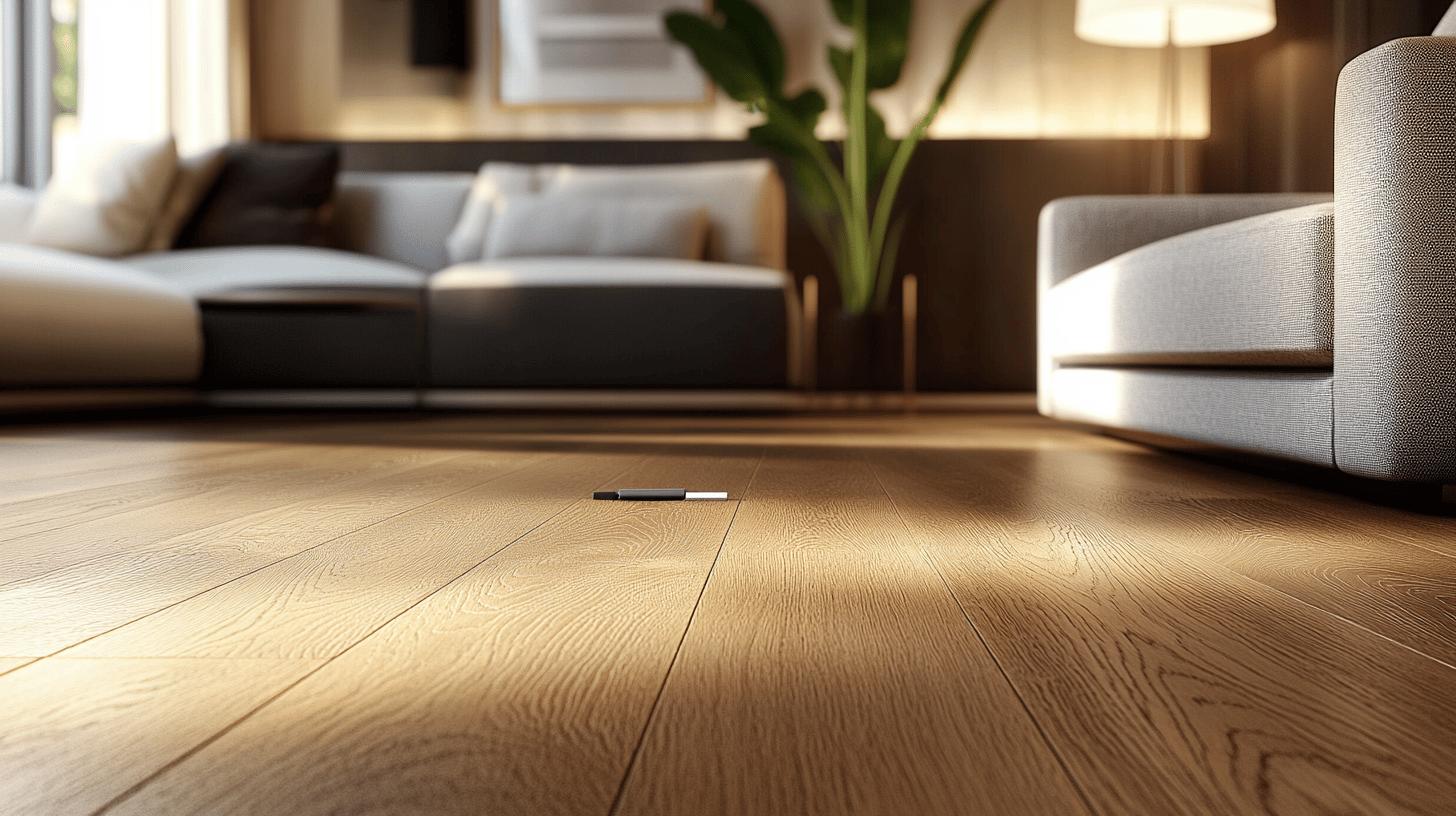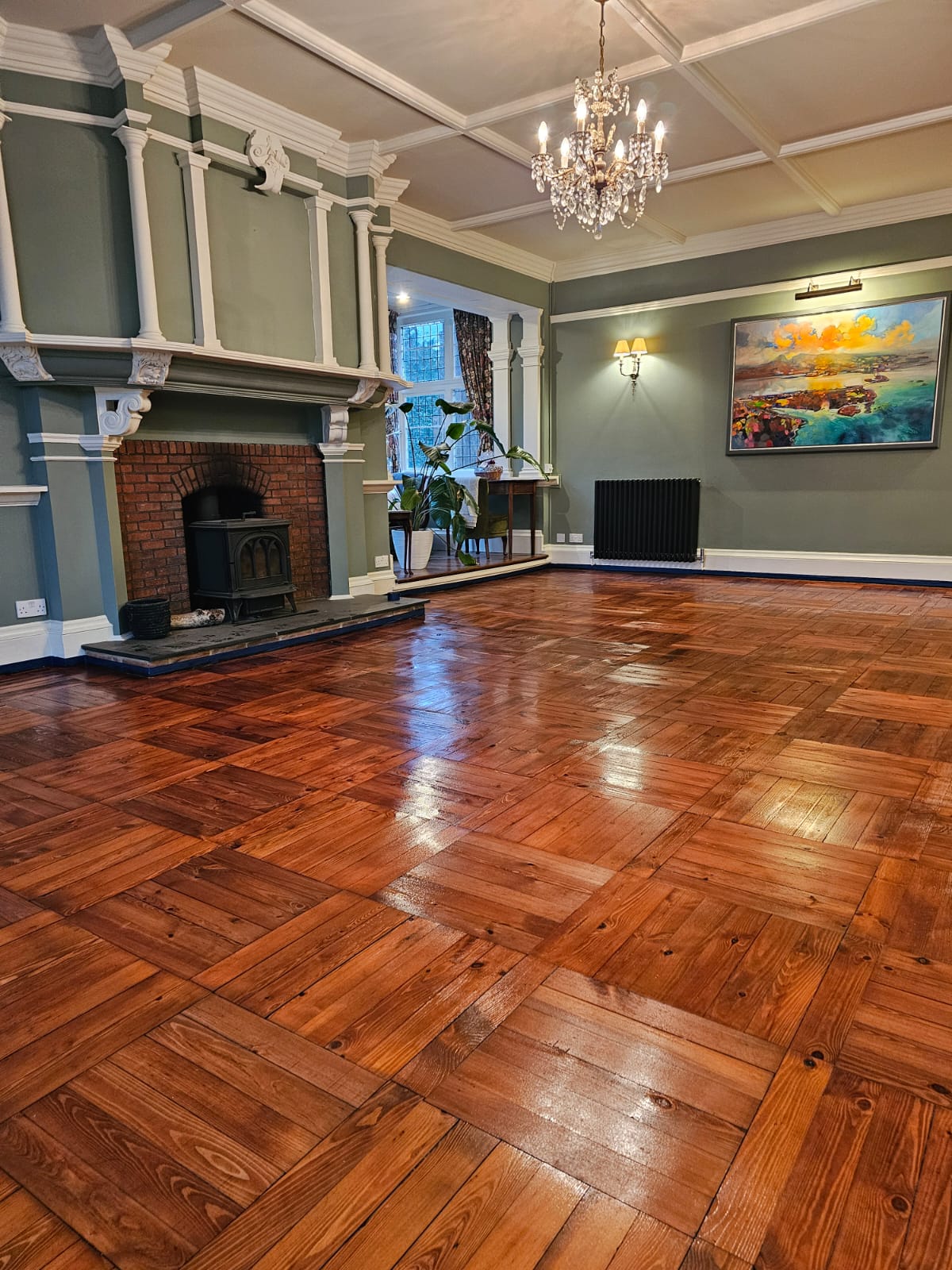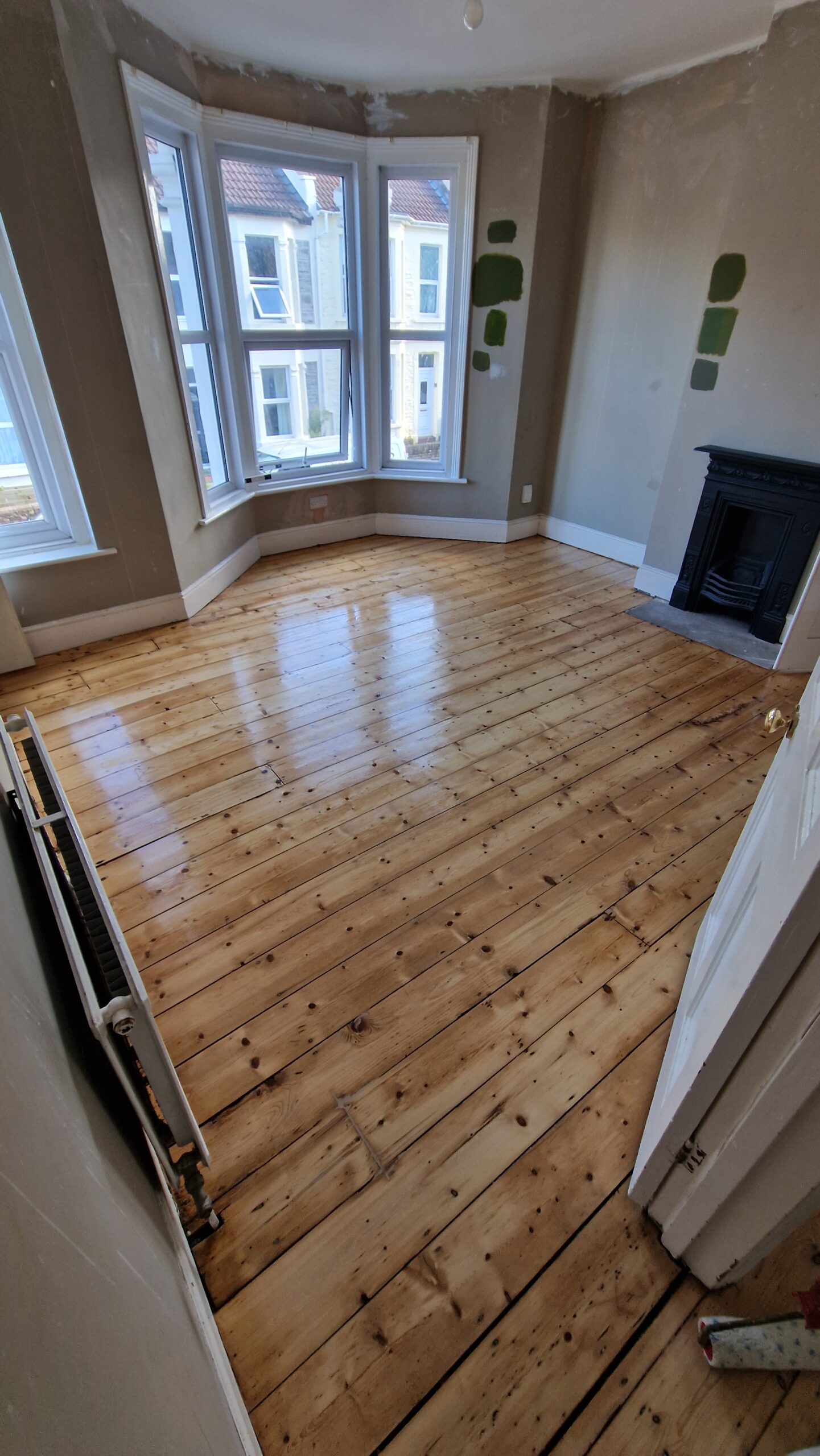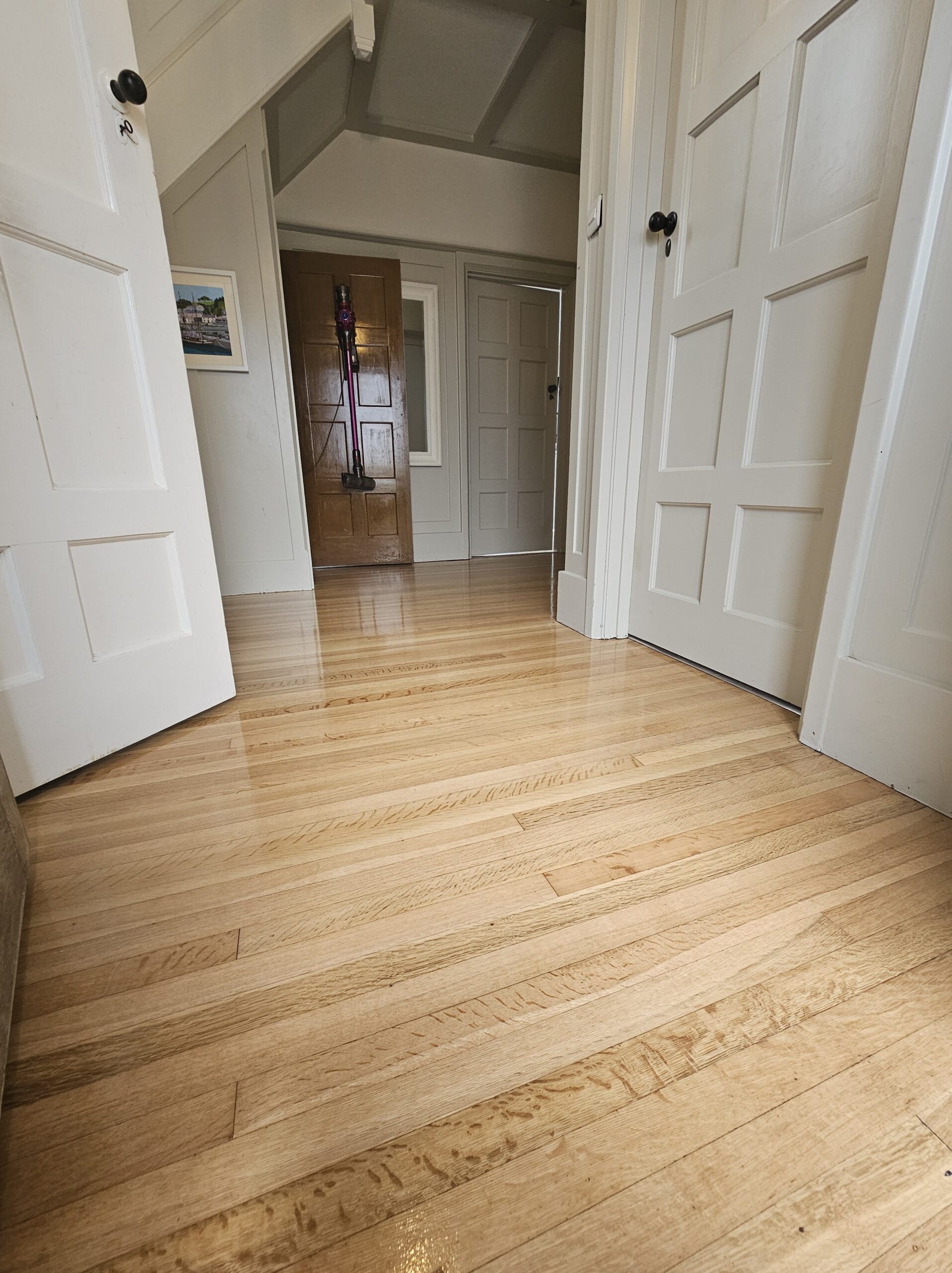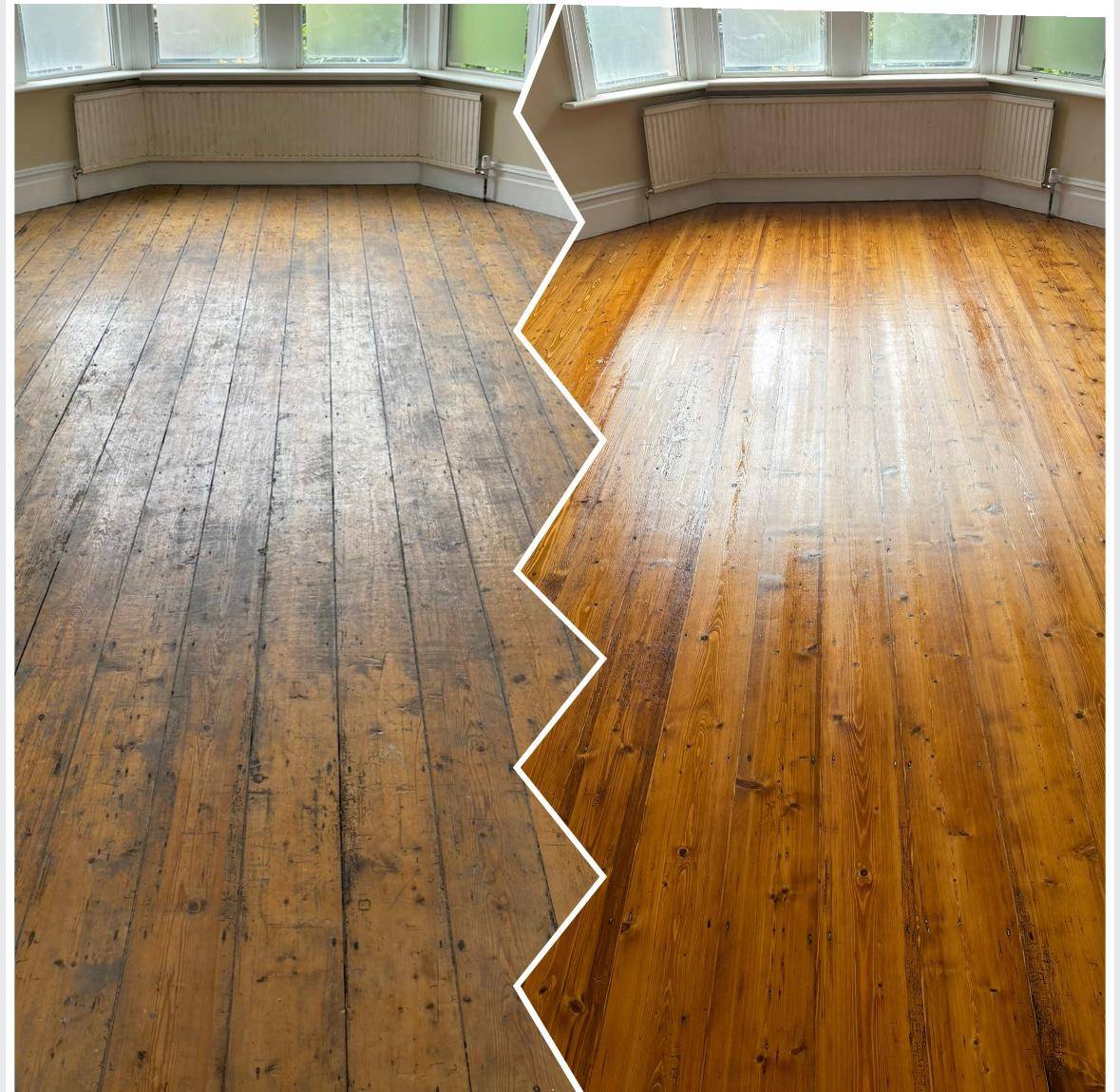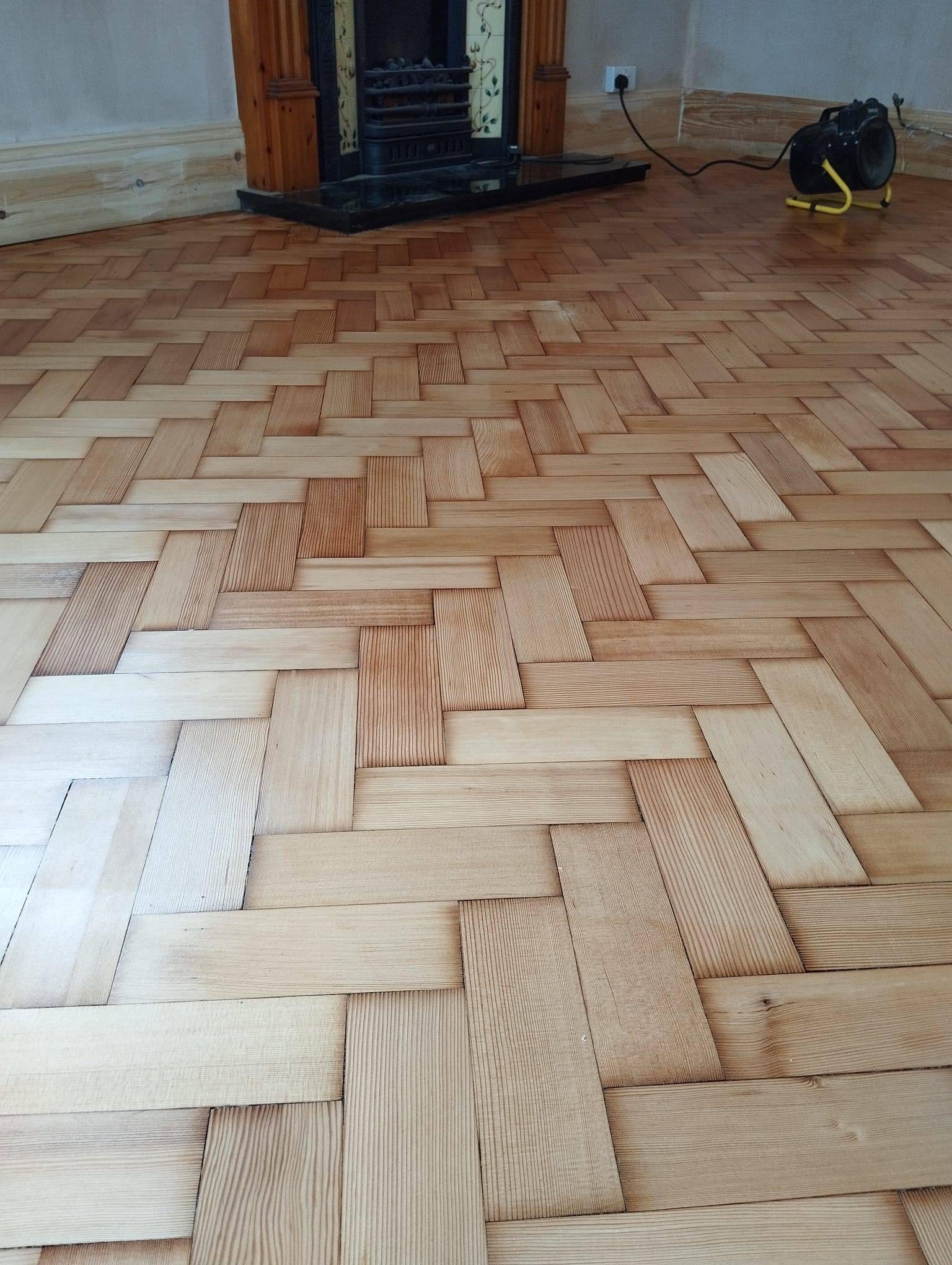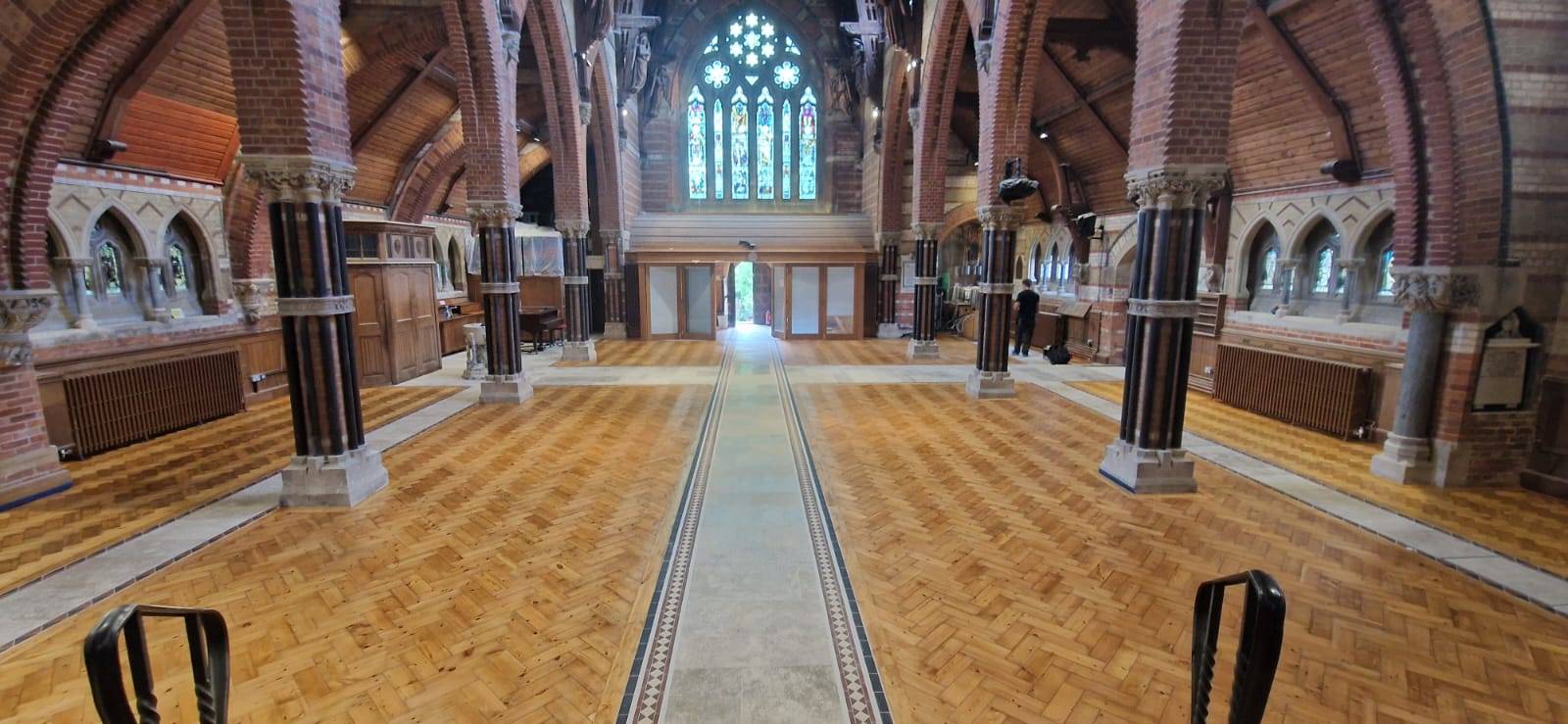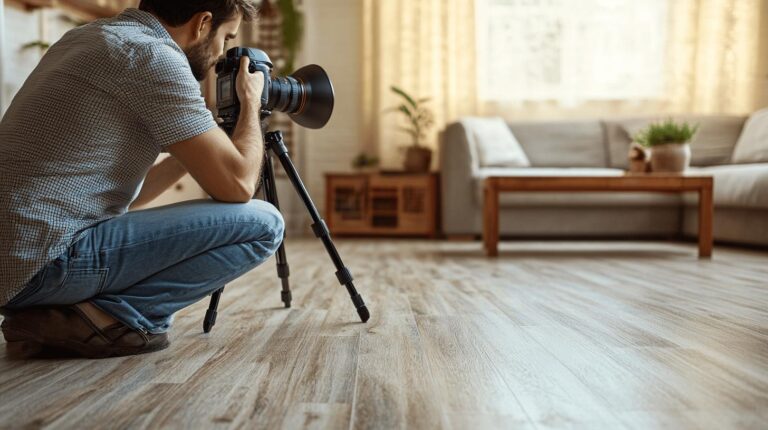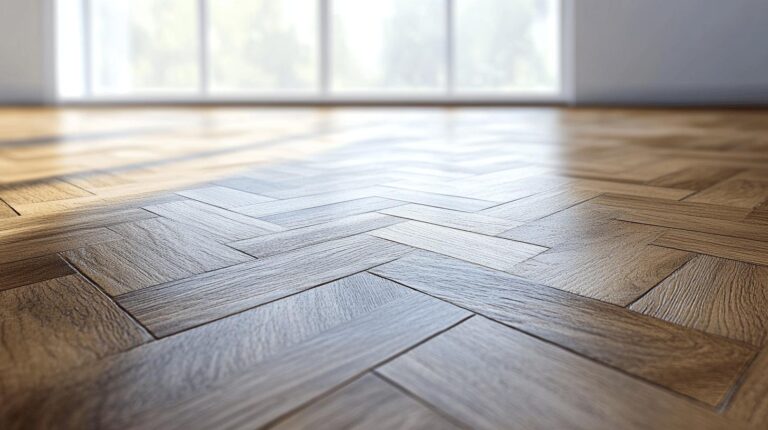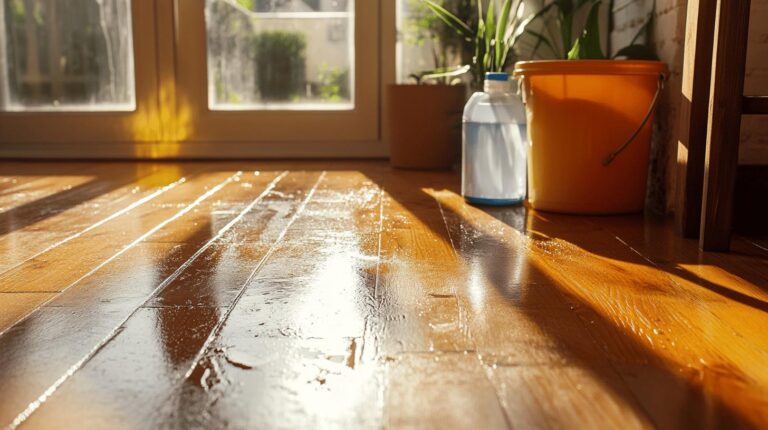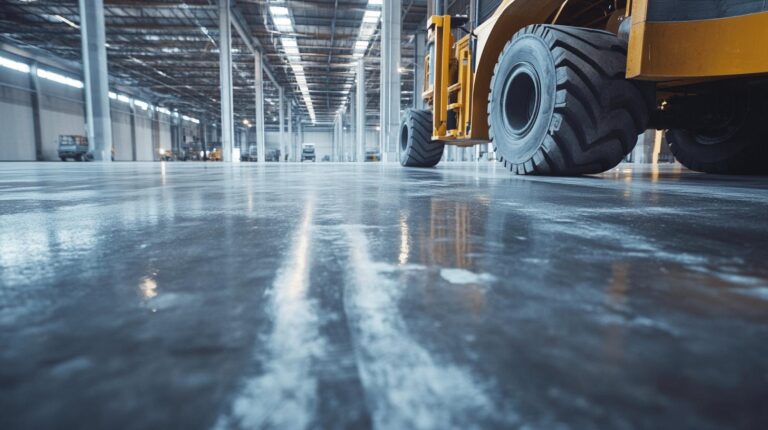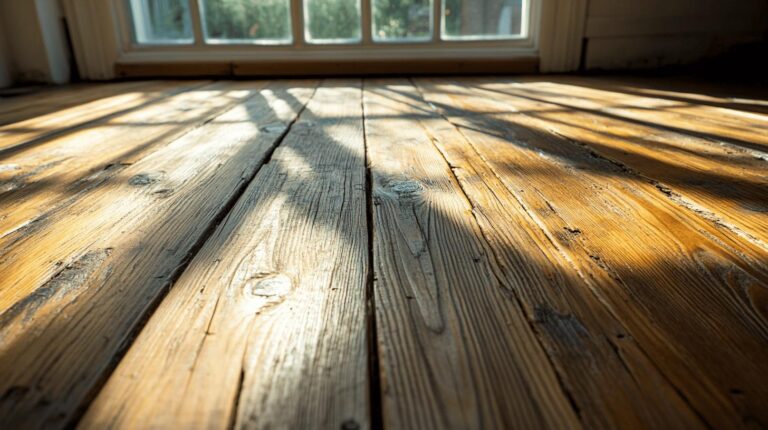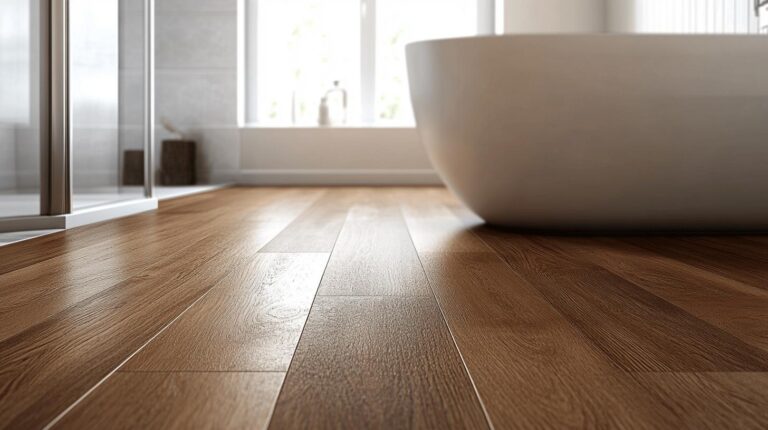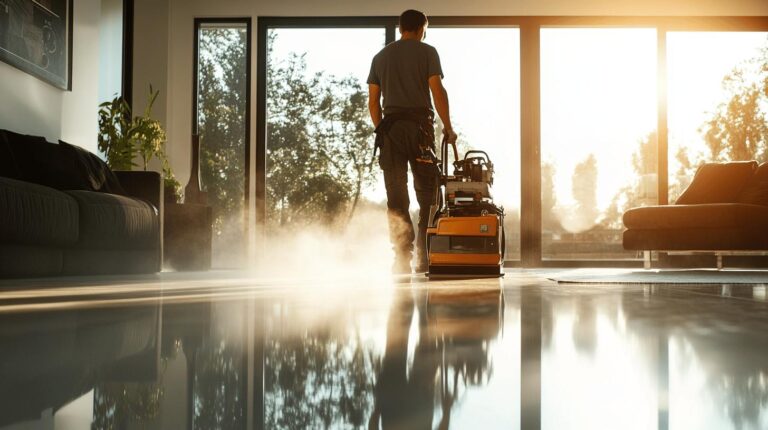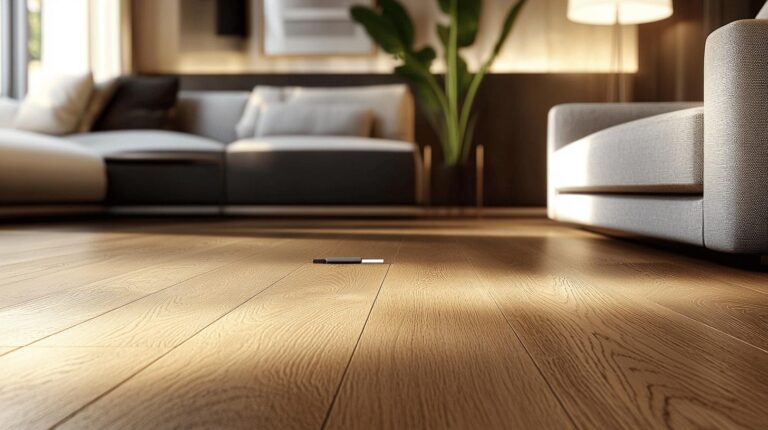Imagine a world where your beautiful wood floors alert you of moisture issues before they cause damage. This isn’t a futuristic dream—it’s the reality with smart sensors in wood floors. These innovative devices are transforming homes with real-time moisture alerts, ensuring your floors remain pristine while protecting your investment. Smart sensors, integral to modern smart-home technology, provide actionable insights by continuously monitoring humidity and notifying homeowners of any critical changes. Discover how integrating smart sensors can revolutionise how you maintain and protect your wood flooring, enhancing both durability and peace of mind.
Understanding Smart Sensors in Wood Floors
Smart sensors are revolutionising wood flooring by integrating advanced technology, including sensor arrays and wireless connectivity, to monitor and maintain floor conditions. These sensors are typically embedded within the flooring structure during the installation process, which involves creating a digital blueprint, integrating hardware, and conducting thorough calibration. The primary function of these sensors is to gather data on environmental conditions, particularly focusing on temperature and relative humidity, to provide real-time alerts and ensure optimal floor maintenance.
Real-time moisture detection is a crucial feature of smart sensors in wood floors. By continuously monitoring moisture levels, these sensors help in preventing water damage and extending the lifespan of the flooring. When humidity levels exceed or fall below predetermined thresholds, the system triggers alerts, allowing for immediate corrective actions. This proactive approach not only safeguards the structural integrity of the wood but also reduces the need for costly repairs and replacements.
- Wireless Connectivity: Enables communication with other smart devices and systems.
- Real-Time Data Monitoring: Provides up-to-date information on environmental conditions.
- Customisable Alerts: Allows users to set specific thresholds for humidity and temperature.
- Long Battery Life: Ensures continuous operation without frequent replacements.
- Ease of Integration: Designed to fit seamlessly within the flooring structure.
.
Smart sensors in wood floors exemplify cutting-edge innovation in home technology, offering homeowners a reliable method to manage and protect their flooring investment. By delivering precise humidity and temperature readings, these sensors help maintain the ideal conditions required for wood floors, thereby enhancing durability and preventing potential damage. As a result, smart sensors are becoming an integral part of modern flooring solutions, ensuring both functionality and peace of mind for property owners.
How Real-Time Moisture Alerts Work
Monitoring moisture levels in wood floors is essential to maintaining their structural integrity and longevity. Real-time moisture detection ensures that any variations in humidity or temperature are promptly addressed, reducing the risk of damage. By implementing a real-time monitoring system, homeowners can effectively safeguard their investment, ensuring that the wood remains in optimal condition regardless of environmental changes.
Monitoring and Alert System
Smart sensors embedded in wood flooring continuously measure temperature and relative humidity, providing precise data on moisture levels. How do these sensors alert users of changes? They utilise smartphone applications to report this data and manage alerts. Users can configure the app to receive notifications when humidity or temperature reaches certain thresholds, ensuring timely intervention. A device like the Floor Sentry, for instance, can store over 16,000 readings, allowing for comprehensive monitoring over time. With a battery that lasts up to 8 years, these systems offer a reliable and long-term solution for maintaining ideal floor conditions.
Benefits of Real-Time Alerts
What are the benefits of real-time moisture alerts? Receiving immediate data on moisture levels enables homeowners to take swift action to mitigate potential damage. This proactive approach helps in preventing costly repairs by addressing issues before they escalate. Real-time alerts serve as an early warning system, allowing for adjustments to be made to the environment, such as modifying humidity levels or addressing leaks. Consequently, real-time alerts play a crucial role in extending the lifespan of wood floors, ensuring they remain a durable and attractive feature of any home.
Installation and Integration of Smart Sensors in Wood Floors
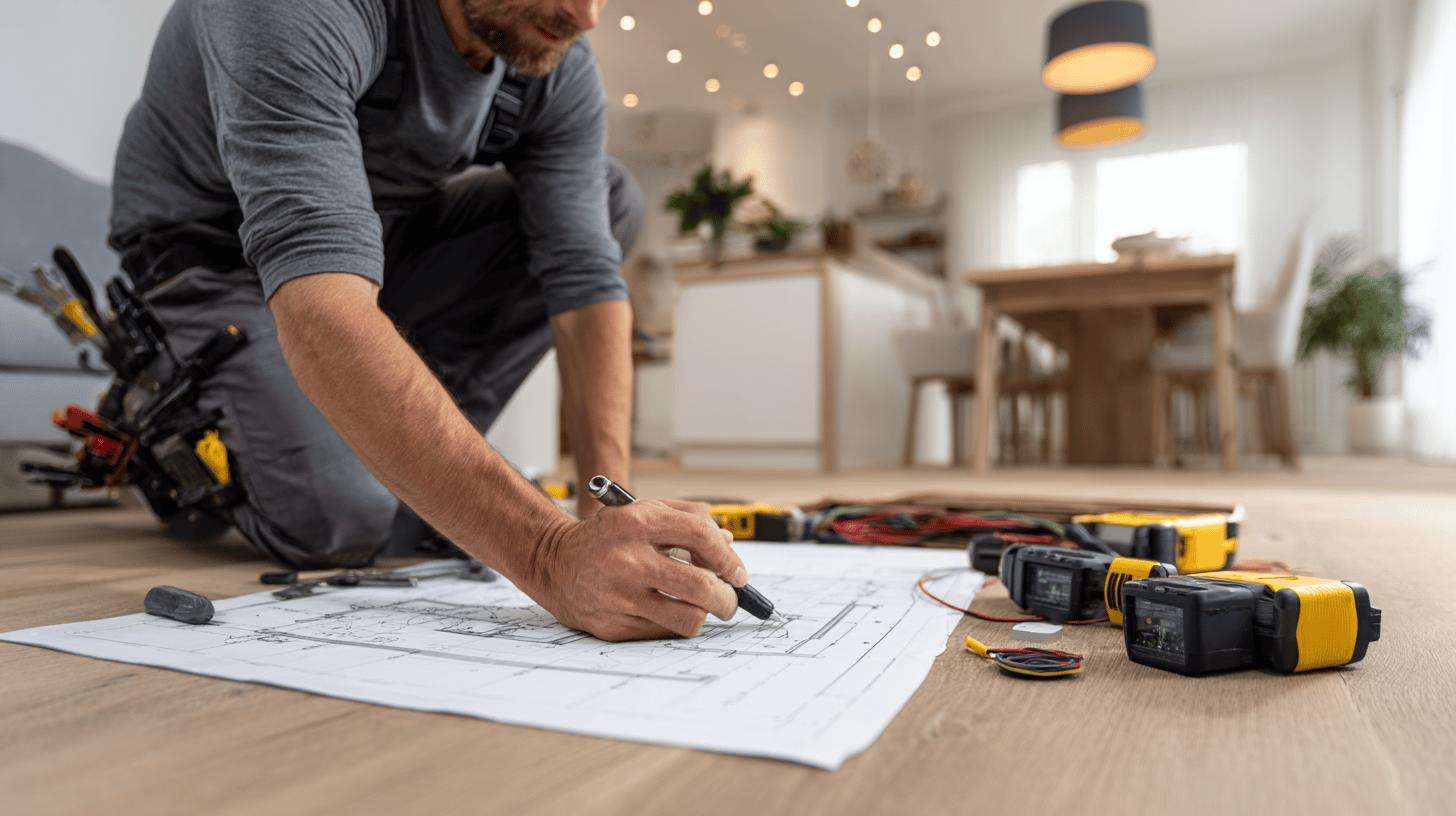
The integration of smart sensors in wood floors is a sophisticated process that involves several critical steps to ensure optimal performance and durability. Sensor technology requires precise installation to function correctly, and although some systems offer the ease of retrofitting, professional installation is recommended to guarantee the best results. This structured approach not only enhances the accuracy of real-time moisture alerts but also ensures that the sensors are seamlessly incorporated into the flooring system.
Installation Steps
The process of installing smart sensors in wood floors is methodical and involves several key steps:
- Survey and Blueprint: The initial stage involves conducting a thorough survey of the flooring area and creating a digital blueprint. This blueprint aids in determining the optimal placement of sensors and planning the layout for effective moisture detection.
- Sub-Floor Preparation: Proper preparation of the sub-floor is crucial to ensure that sensors are installed on a stable and even surface. This step may involve cleaning, levelling, and ensuring that the sub-floor is free of any debris or obstacles.
- Hardware Integration: Once the sub-floor is prepared, the sensors are integrated into the flooring. This involves embedding the sensor arrays within the wood floor structure, ensuring they are positioned accurately for optimal performance.
- Calibration: The final step is calibration, where the sensors are fine-tuned to accurately measure and report environmental conditions. Calibration ensures that the sensors provide reliable data and function as intended.
.
Retrofitting Options
For existing wood floors, retrofitting smart sensors can be a practical solution. Retrofitting allows homeowners to upgrade their floors with sensor technology without the need for a complete replacement. The benefits of retrofitting include cost-effectiveness and minimal disruption to the existing flooring. By incorporating sensors beneath the current floor, homeowners can enhance their flooring’s functionality and extend its lifespan through improved moisture monitoring.
Advantages and Limitations of Smart Sensor Technology in Wood Floors
Smart sensor technology in wood floors offers significant advantages, particularly in terms of floor damage prevention and flooring lifespan extension. These sensors provide a proactive approach to floor care by continuously monitoring environmental conditions and issuing real-time moisture alerts. This capability allows homeowners to address potential issues before they escalate, thereby protecting the structural integrity of their floors. Additionally, smart floors contribute to energy savings by enhancing the efficiency of under-floor heating systems and maintaining optimal humidity levels, which can also lead to improved wellbeing within the home. As technology continues to advance, these smart systems are designed to be future-proof, allowing for seamless updates and integration with new technologies, ensuring longevity and sustained performance.
- High initial installation costs
- Requires ongoing maintenance for optimal performance
- Potential compatibility issues with existing flooring systems
- Limited battery life despite long-term claims
- Dependency on smartphone app functionality
- Potential for technical malfunctions
.
Despite these advantages, there are limitations to consider. The initial installation of smart sensors can be costly, and maintaining the system requires regular attention to ensure it operates efficiently. Compatibility with existing flooring systems may also present challenges, and while the technology promises a long battery life, users may still need to replace components over time. Moreover, the effectiveness of these sensors is dependent on the functionality of associated smartphone apps, and any technical malfunctions could hinder their performance. Nevertheless, the benefits of enhanced floor protection and extended lifespan make smart sensors a valuable investment for those looking to safeguard their wood floors.
Case Studies and Product Recommendations
In a notable case study, a flooring contractor utilised smart sensors to ensure optimal conditions during the installation of a large commercial wood floor. The sensors were strategically placed to monitor real-time moisture levels, allowing the contractor to make immediate adjustments to the indoor environment and mitigate potential damage. This proactive use of smart sensor technology enabled the contractor to maintain the integrity of the flooring throughout the process, ultimately protecting the client’s investment by preventing moisture-related issues. The success of this installation underscores the value of integrating such technology in both commercial and domestic flooring projects.
For those seeking effective moisture monitoring solutions, the Floor Sentry is a highly recommended product. It seamlessly integrates with smartphone applications to deliver real-time data on humidity and temperature levels. This product is particularly praised for its long battery life and the ability to store over 16,000 readings, providing users with comprehensive monitoring capabilities. By adopting devices like Floor Sentry, homeowners and businesses can enhance their flooring investment protection, ensuring that their wood floors remain in optimal condition for years to come.
Final Words
Diving into the practicalities of smart sensors in wood floors reveals their significance in maintaining and safeguarding flooring integrity. By offering real-time moisture alerts, these sensors enable prompt action against potential water damage, thereby extending the lifespan of wood flooring and enhancing overall wellbeing.
While the installation of smart sensors demands careful planning and initial investment, the benefits they provide cannot be overlooked. These sensors not only protect but also enhance the value of flooring investments.
Adopting smart sensors in wood floors presents a forward-thinking approach. Advanced technology such as Smart Sensors in Wood Floors: Real-Time Moisture Alerts makes impeccable flooring maintenance achievable, aligning with the future of home innovation.
Future-proof your floor → Contact Us
FAQ
Q: What are smart sensors in wood floors?
A: Smart sensors in wood floors involve a network of sensor arrays and wireless connections, providing real-time data on environmental conditions, crucial for maintaining and protecting wood floors.
Q: How do smart sensors prevent wood floor damage?
A: By detecting real-time moisture and alerting users, smart sensors allow immediate actions that prevent water damage, preserving the floor’s integrity and prolonging its lifespan.
Q: What are the common features of smart sensors for wood flooring?
A: Common features include real-time moisture alerts, temperature and humidity monitoring, smartphone app integration, historical data storage, and extended battery life.
Q: How do real-time moisture alerts function in wood floors?
A: Smart sensors constantly measure temperature and humidity, notifying users via apps when thresholds are exceeded, helping in immediate problem identification and resolution.
Q: What are the benefits of receiving real-time moisture data alerts?
A: Benefits include immediate action on potential issues, protection against floor damage, and better floor maintenance, ensuring longevity and enhanced performance.
Q: What are the key steps in installing smart sensors in wood flooring?
A: Installation involves site survey, creating a digital blueprint, sub-floor preparation, hardware integration, and calibration for optimal sensor functionality.
Q: Can smart sensors be retrofitted into existing wood floors?
A: Yes, sensors can often be integrated into existing floors, enhancing their utility without needing a complete overhaul.
Q: What are the advantages of using smart sensor technology in wood floors?
A: Smart sensors offer preventive maintenance, energy savings, future-proofing for tech updates, and enhance floor durability.
Q: What are the limitations of smart sensors in wood flooring?
A: Limitations include high initial costs, ongoing maintenance needs, possible integration issues with older floors, dependency on technology, potential connectivity problems, and battery replacements.
Q: Are there any recommended products for integrating smart sensors in wood floors?
A: The Floor Sentry is a recommended product, known for effective moisture monitoring and smartphone app compatibility, safeguarding flooring investments.
